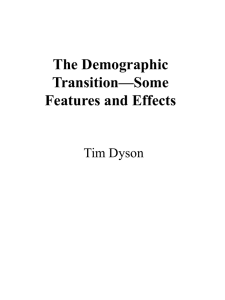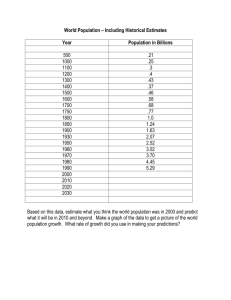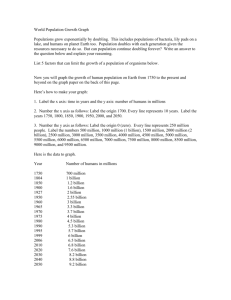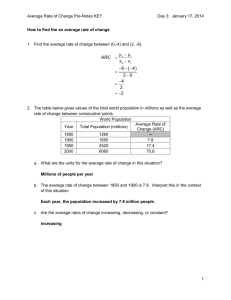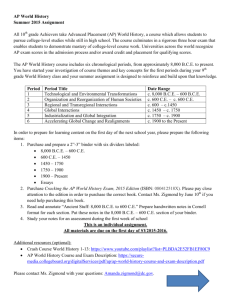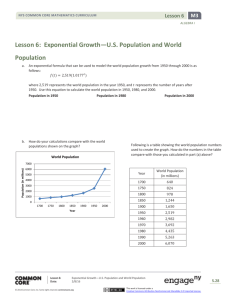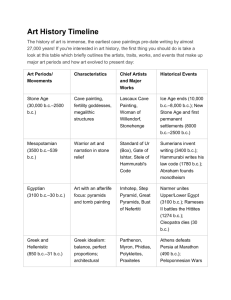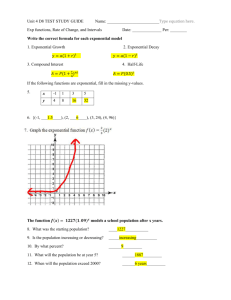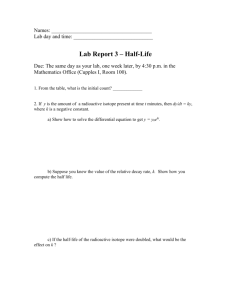More problems for section 5.3 of Essentials of Precalculus with
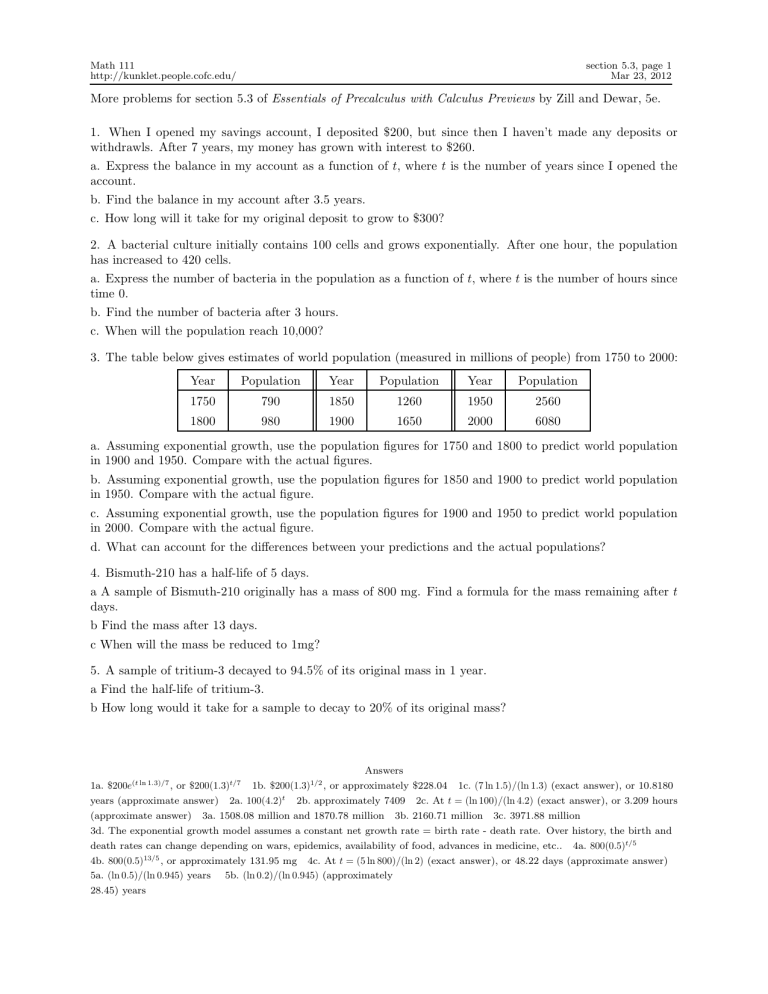
Math 111 http://kunklet.people.cofc.edu/ section 5.3, page 1
Mar 23, 2012
More problems for section 5.3 of Essentials of Precalculus with Calculus Previews by Zill and Dewar, 5e.
1. When I opened my savings account, I deposited $200, but since then I haven’t made any deposits or withdrawls. After 7 years, my money has grown with interest to $260.
a. Express the balance in my account as a function of t , where t is the number of years since I opened the account.
b. Find the balance in my account after 3.5 years.
c. How long will it take for my original deposit to grow to $300?
2. A bacterial culture initially contains 100 cells and grows exponentially. After one hour, the population has increased to 420 cells.
a. Express the number of bacteria in the population as a function of t , where t is the number of hours since time 0.
b. Find the number of bacteria after 3 hours.
c. When will the population reach 10,000?
3. The table below gives estimates of world population (measured in millions of people) from 1750 to 2000:
Year
1750
1800
Population
790
980
Year
1850
1900
Population
1260
1650
Year
1950
2000
Population
2560
6080 a. Assuming exponential growth, use the population figures for 1750 and 1800 to predict world population in 1900 and 1950. Compare with the actual figures.
b. Assuming exponential growth, use the population figures for 1850 and 1900 to predict world population in 1950. Compare with the actual figure.
c. Assuming exponential growth, use the population figures for 1900 and 1950 to predict world population in 2000. Compare with the actual figure.
d. What can account for the differences between your predictions and the actual populations?
4. Bismuth-210 has a half-life of 5 days.
a A sample of Bismuth-210 originally has a mass of 800 mg. Find a formula for the mass remaining after t days.
b Find the mass after 13 days.
c When will the mass be reduced to 1mg?
5. A sample of tritium-3 decayed to 94.5% of its original mass in 1 year.
a Find the half-life of tritium-3.
b How long would it take for a sample to decay to 20% of its original mass?
1a.
$200 e ( t ln 1 .
3) / 7 , or $200(1 .
3) t/ 7 years (approximate answer) 2a.
100(4 .
2) t
Answers
1b.
$200(1 .
3) 1 / 2 , or approximately $228.04
1c.
(7 ln 1 .
5) / (ln 1 .
3) (exact answer), or 10.8180
2b. approximately 7409 2c. At t = (ln 100) / (ln 4 .
2) (exact answer), or 3.209 hours
(approximate answer) 3a. 1508.08 million and 1870.78 million 3b. 2160.71 million 3c. 3971.88 million
3d. The exponential growth model assumes a constant net growth rate = birth rate - death rate. Over history, the birth and death rates can change depending on wars, epidemics, availability of food, advances in medicine, etc..
4a.
800(0 .
5) t/ 5
4b.
800(0 .
5) 13 / 5 , or approximately 131.95 mg 4c. At t = (5 ln 800) / (ln 2) (exact answer), or 48.22 days (approximate answer)
5a.
(ln 0 .
5) / (ln 0 .
945) years 5b.
(ln 0 .
2) / (ln 0 .
945) (approximately
28.45) years
